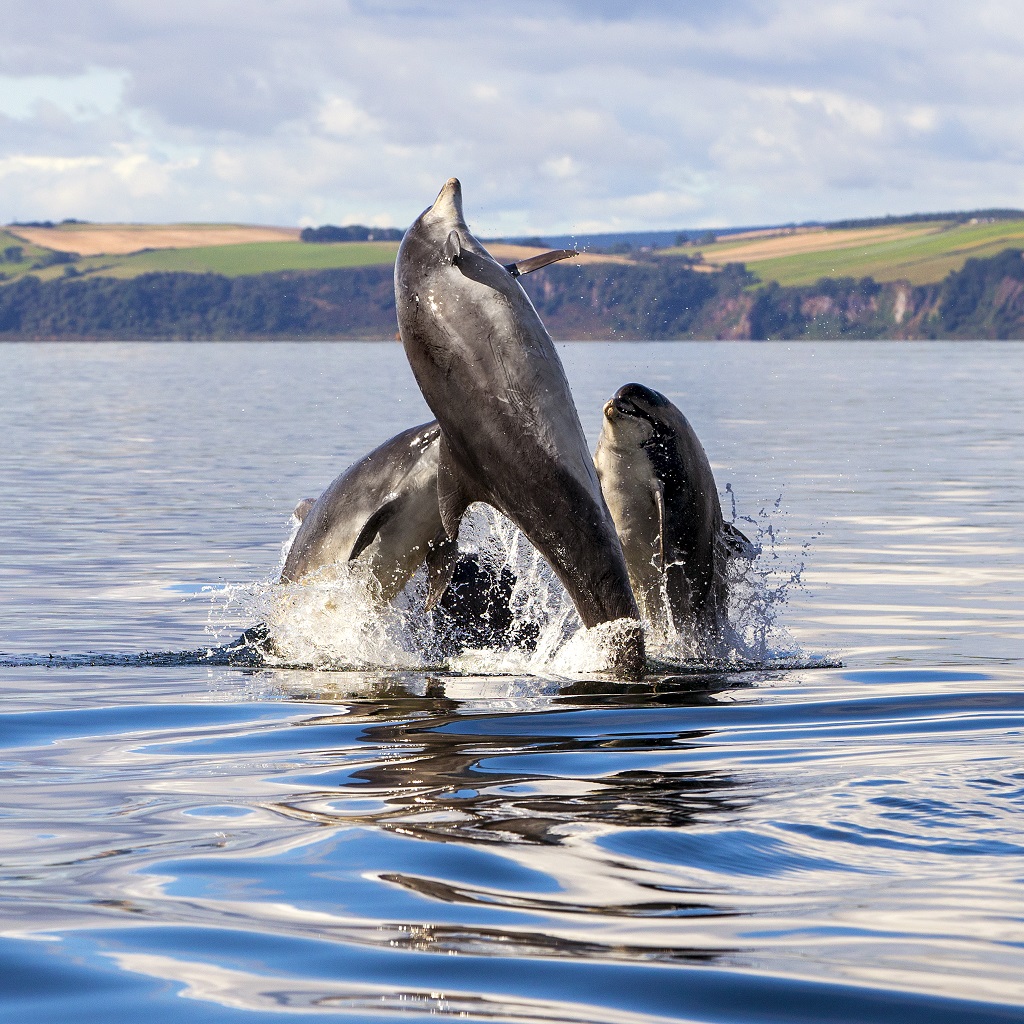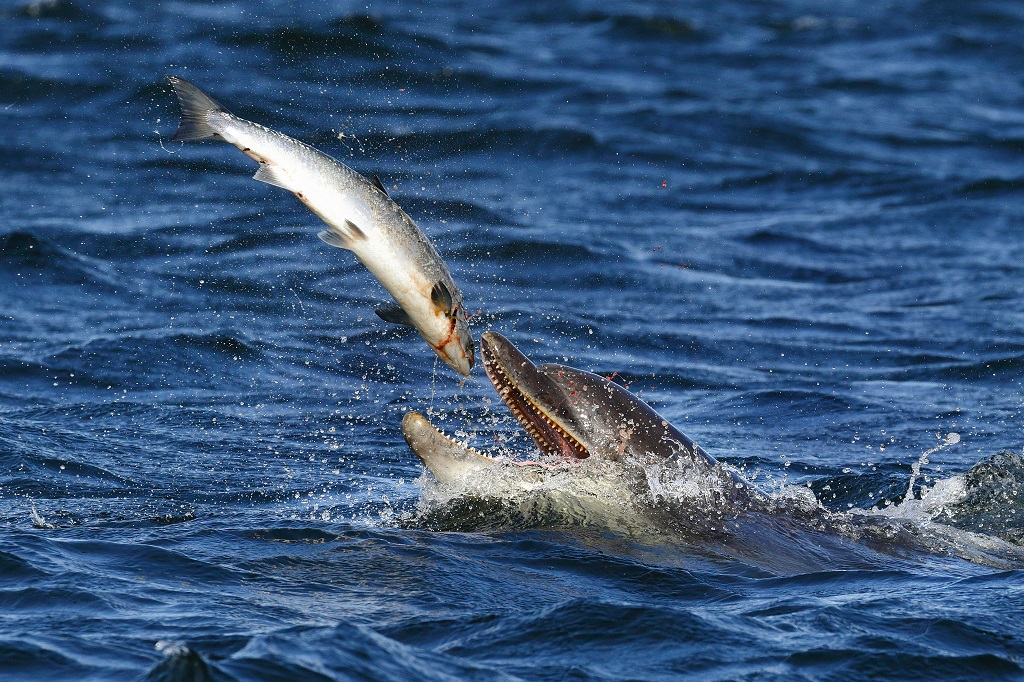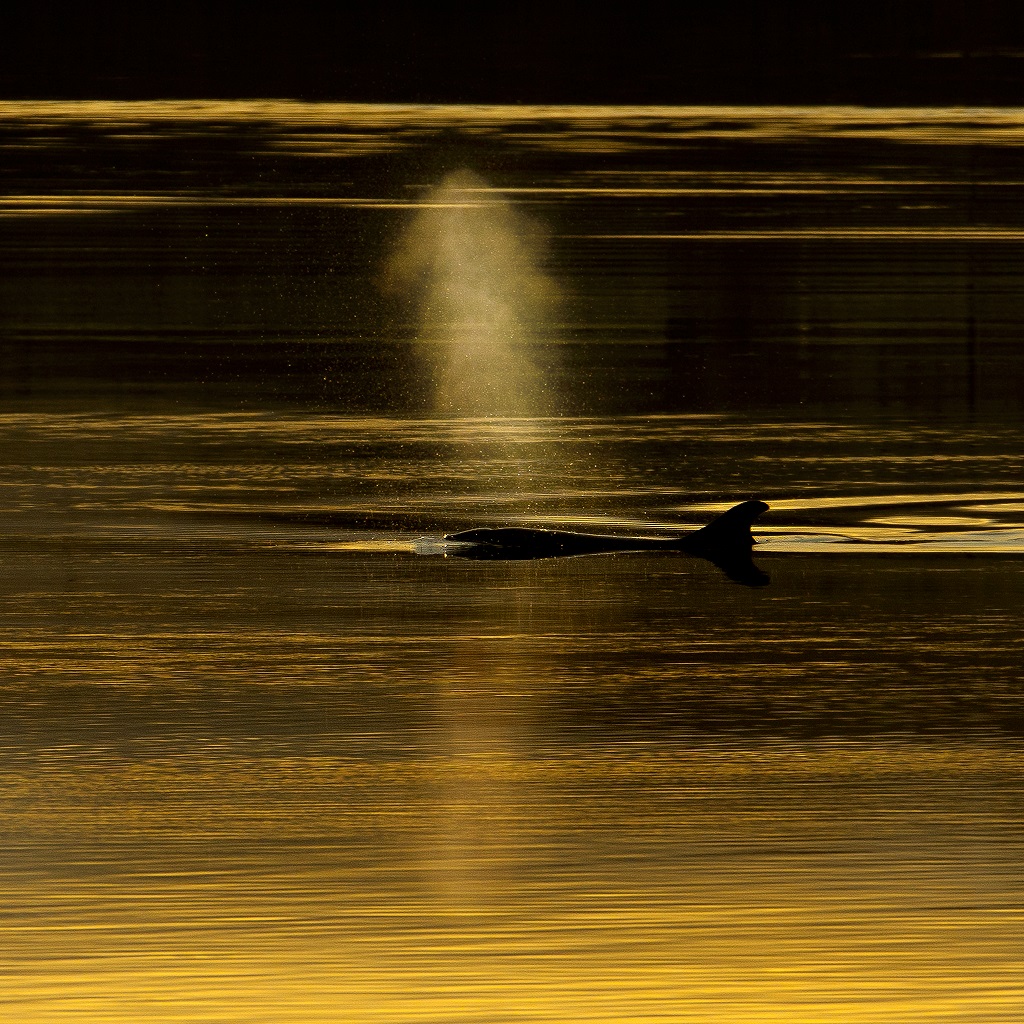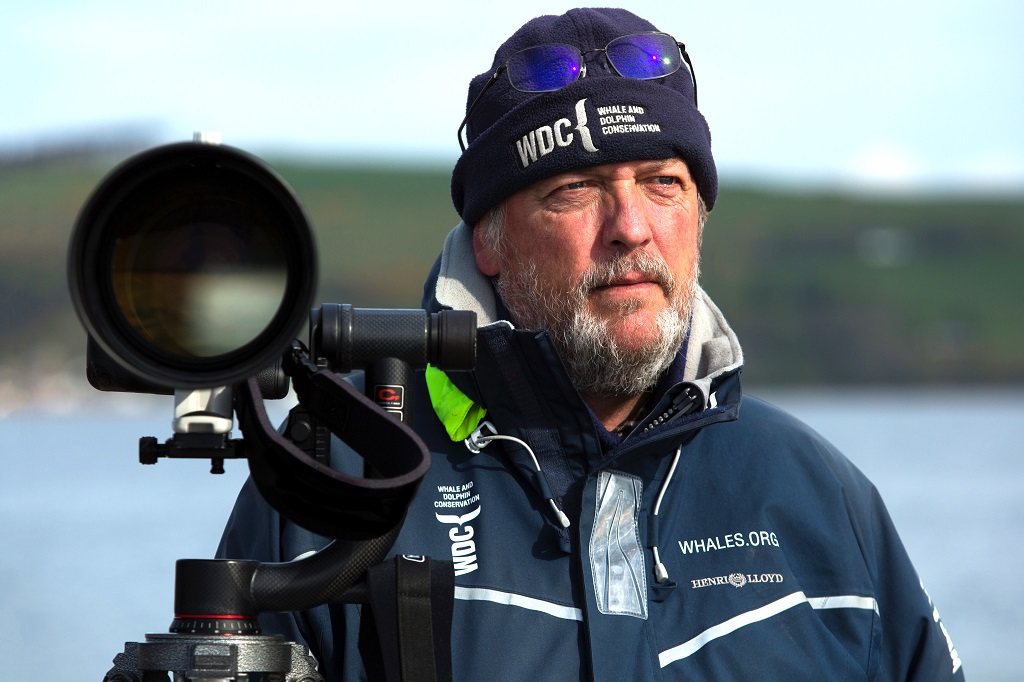
Scotland’s bottlenose dolphins – the party animals
Nature photographer Charlie Phillips’ book captures Scotland’s bottlenose dolphins at work, rest and play.
Charlie is making a big splash with On a Rising Tide, a striking photographic record of Scotland’s most northerly bottlenose dolphins. It’s nothing less than you’d expect from a man who has dedicated much of his life to studying the creatures.
It all started back in 1988 when Charlie’s parents put their retirement plans on hold to run their son’s newsagents business so that he could take off on what he describes as ‘a mad dolphin trip’. That journey was the start of an extraordinary body of work, monitoring in detail the Moray Firth’s bottlenose dolphins.
For Charlie, who now works for the marine charity Whale and Dolphin Conservation (WDC), the trickiest part of putting the book together was deciding which images to leave out from the hundreds of thousands he has captured over the years.

Male dolphins sometimes form ‘clubs’. (Photo: Charlie Phillips)
His fascination with the Moray Firth dolphins stems from family holidays as a child to the fishing village of Portmahomack. Bow-riding dolphins would often accompany them when he and his father went out in a dinghy, and he became intrigued by the mammals.
Years later Charlie found himself living and working in Cullen, which further fuelled his dolphin fascination. Not only could he watch them from his living-room window, he could take out a boat and see them close up. His understanding grew of when and where the dolphins might appear. There was a pattern to their behaviour dependent on tide, current and fish movements. Meanwhile, through local media and dolphin-watching groups, news spread of the magic that is the Moray Firth dolphins.
In 1996, Charlie joined the team at the North Kessock Dolphin & Seal Centre. Fondly known as ‘the green shed’, it was a small structure built by Ross & Cromarty District Council as a tester to see how much interest there was in the dolphins. Charlie explains that during this time, two life-changing events took place, and he is careful to list them in the correct order of importance: ‘First, I met Susan, my lovely future wife, and second I struck up a working relationship with staff from the UK-based marine charity Whale and Dolphin Conservation Society.’

A dolphin tosses a salmon it has caught in the air. (Photo: Charlie Phillips)
His diaries and photographs were submitted to the society’s ID collection, and he took up a post as a WDC field officer. His main task was to maintain a photographic record of the Moray Firth bottlenose dolphins, but he was also involved in the society’s Adopt a Dolphin scheme.
Photographing these quicksilver subjects is a challenge: bucking boats, gales, rain and sea spray, coupled with never knowing quite when and where they may surface, requires patience and dedication.
‘There are currently in the region of 200 dolphins in the Moray Firth and North East Scotland, and half of these are frequently seen close to Inverness. They are at the northernmost limit of their range,’ Charlie says.
‘I am now based in my wife’s studio at North Kessock. Its geographic location makes it good for viewing the dolphins. Strong tides that culminate in a natural fish trap enable the dolphins to fish easily. It’s also near Chanonry Point, Fortrose, which is the ultimate spot for land-based viewing and my open-air “office”.

A dolphin in the sea (Photo: Charlie Phillips)
‘The Moray Firth population status seems to be stable, although over the years there has been a tidal wave of news items with concerns about them. Boats and increasing development, wind farm structures, the fabrication of new marinas, and all the detritus of human existence is a constant threat.
‘Most commercial marine tourism operators are very respectful but we do have issues with others, in particular some jet-bike and speedboat operators who deliberately go far too close and are sometimes breaking the law,’ Charlie says. ‘If people want to see dolphins from the sea, it is important that they choose accredited boat operators who know the rules and respect the animals.’
A bottlenose dolphin can live for up to 50 years. It is in its early teens before it reaches sexual maturity, while a 12-month gestation period, followed by two years of feeding, puts a heavy burden on the females. Calves are born throughout the year, and grow at a phenomenal rate. Charlie talks movingly of witnessing a calf coming to the surface minutes after its birth.
‘There are sometimes midwife dolphins in attendance and the moment the calf is born, it is gently guided to the surface where it has to take its first breath. It takes a few days before it has mastered a smooth breathing rhythm.

Charlie Phillips (Photo: Justin Purefoy)
‘The calves are usually pale in colour and are quite floppy at birth – the first few days are critical,’ he says. ‘The newborns have very pale foetal fold stripes and are all wrinkly, just like wee accordions, from when they were curled up in the womb. Even after a few years these stripes are still just visible, although the calf begins to darken soon after birth.
‘Females often mate with several different males to minimise the risk of infanticide from males seeking to spread their own genes,’ he adds. ‘This is an animal with incredible intelligence.’
When it comes to growing up, there are some familiar patterns. ‘The young dolphin is a real party animal, and like all children is regularly reprimanded. There are even smackings, par ticularly when youngsters get into risky situations. Parental guidance continues until the offspring are at least four or five years old. The male dolphins sometimes form clubs where there are alliances, but although there are some very large males, there are no head honchos,’ Charlie says.
So what is it about a dolphin that is so beguiling? ‘Wild and free, this is an intelligent and sentient being – an apex predator that hunts for its survival. We must always remember that we are in their space – the water is their realm and we have to respect that at all times.’
(This feature was originally published in 2016)
TAGS

